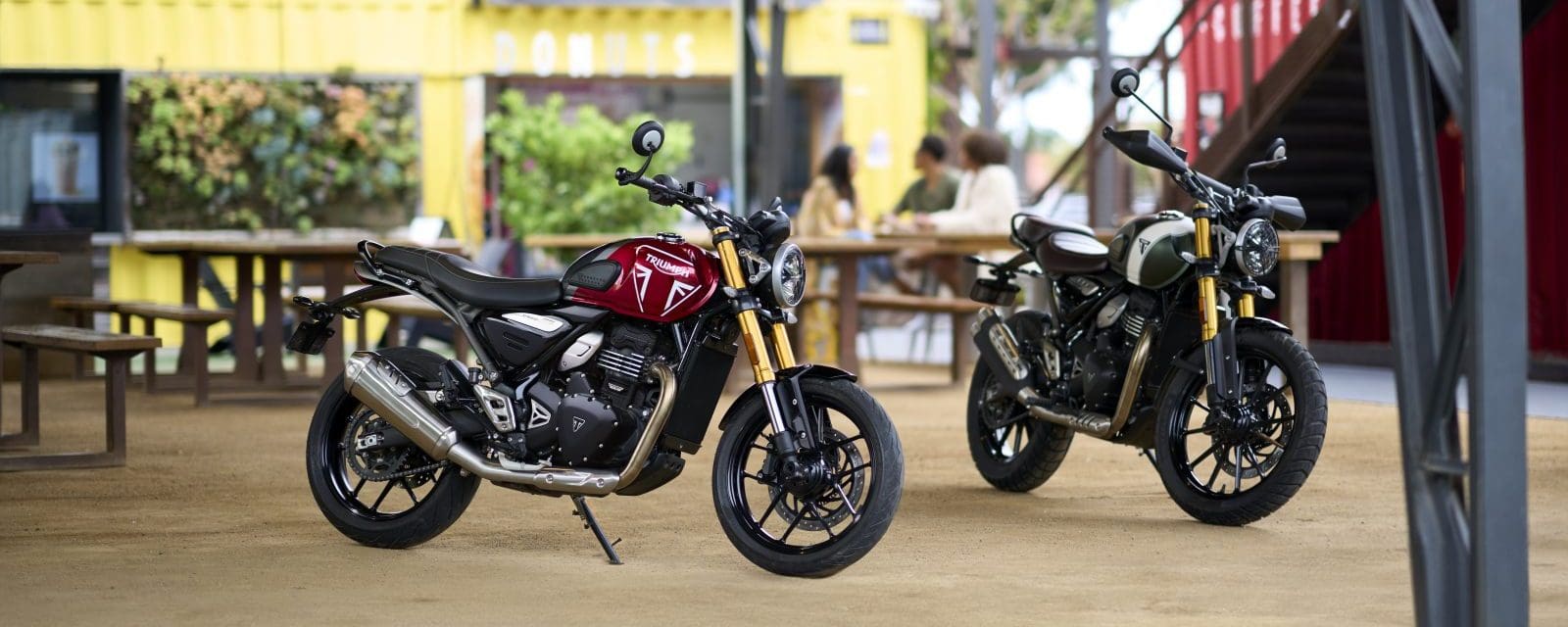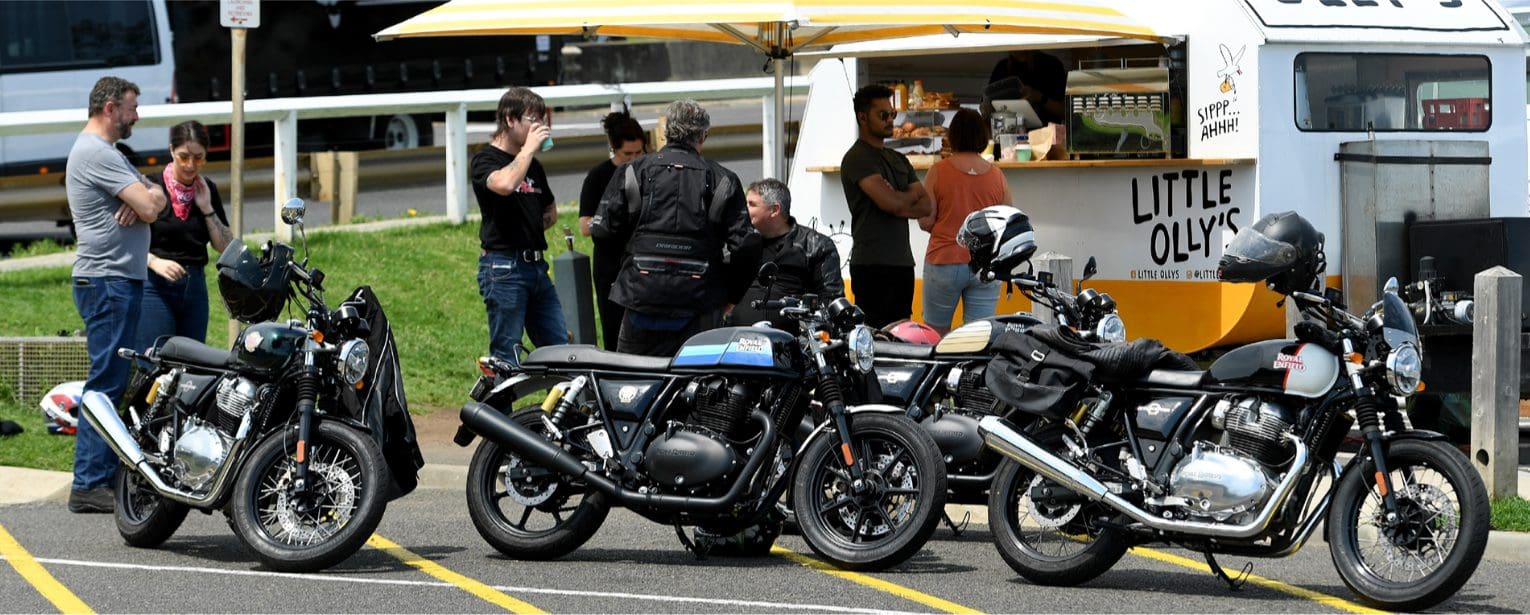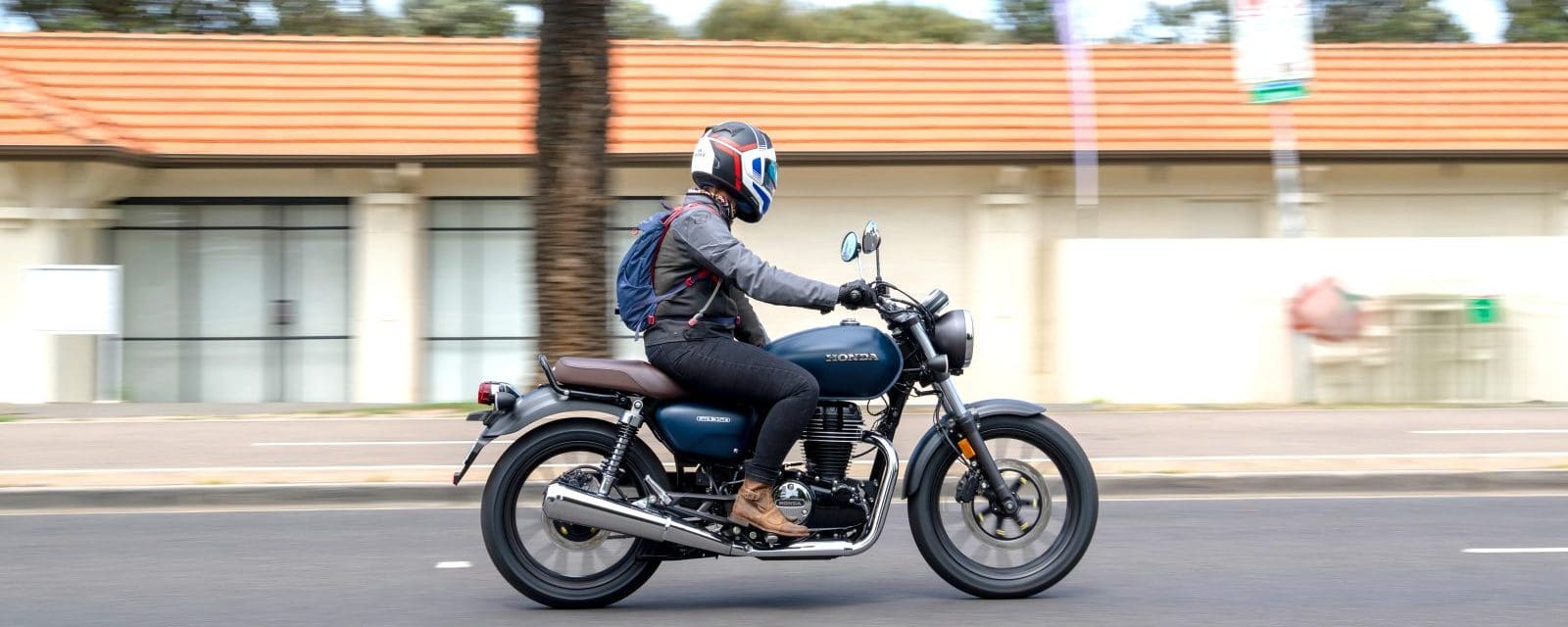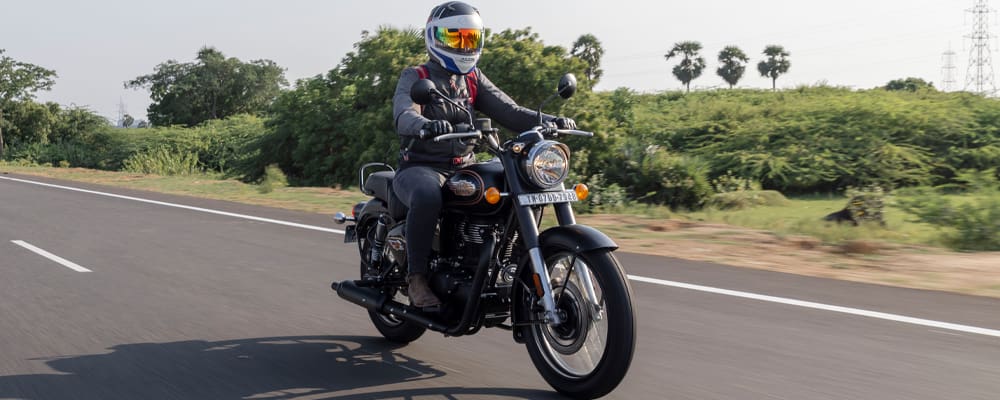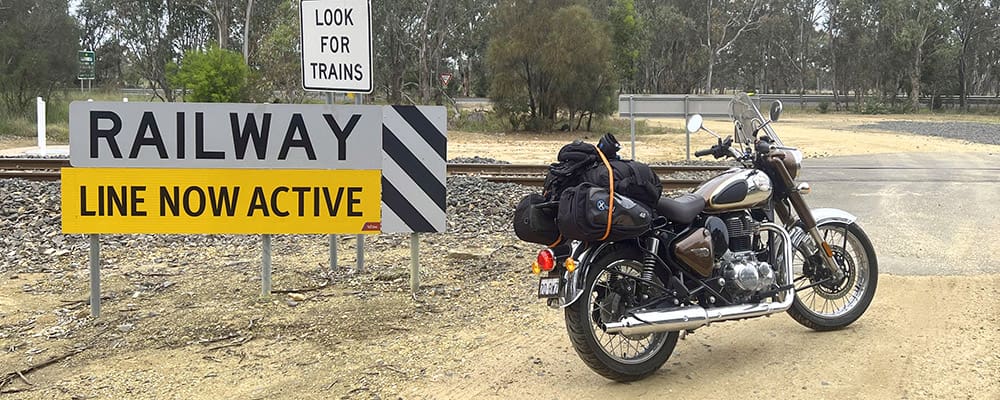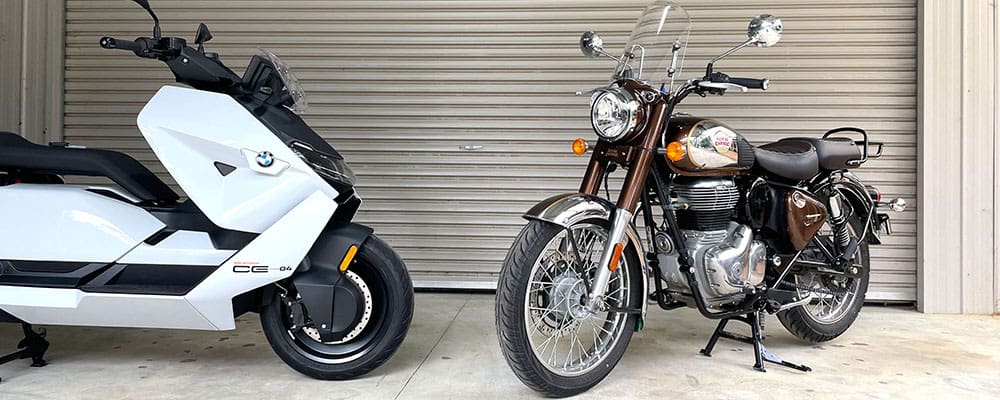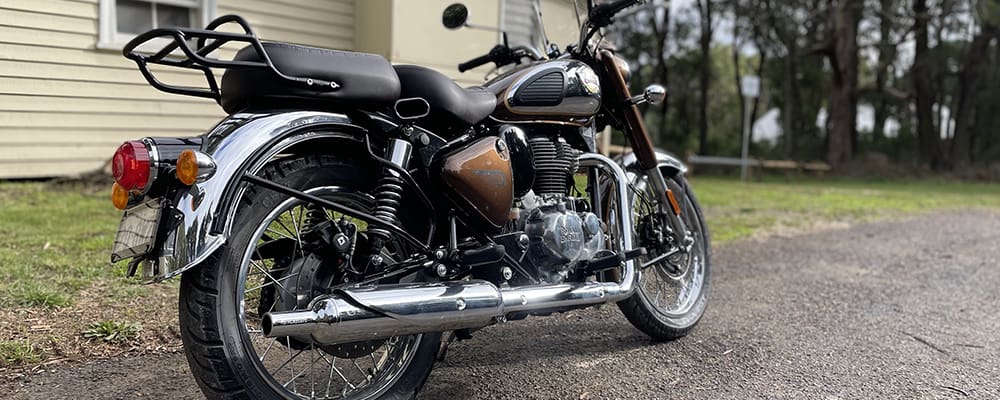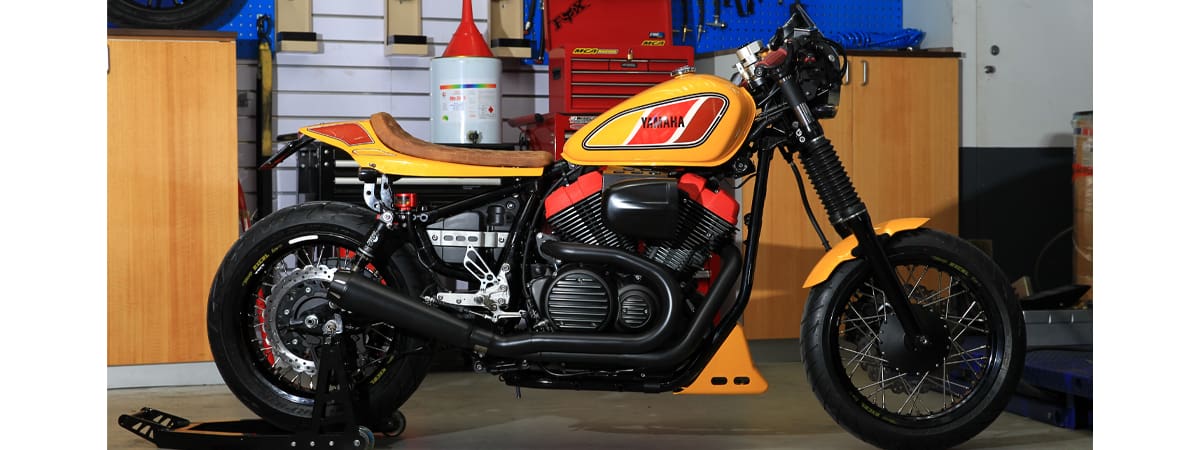‘You get what you pay for’ is one of those sayings we comfort ourselves with when the compromises in something that didn’t cost a lot of money become glaring on close inspection. Then you ride the new Triumph 400 models, the sub-$10k Speed 400 and Scrambler 400 X, and the narrative switches to, ‘What’s the catch?’

Thing is, there doesn’t appear to be a catch – at least not in the short term. These new Triumphs are, well, triumphs of the rare engineering feat of creating an excellent riding experience with few compromises in build quality for less than $10k ($8990 ride-away for the Speed, $9990 for the Scrambler).
Sure, many of its rivals have a lower retail price, but it’s still kind of hard to fathom how Triumph has managed to keep these 398cc single-cylinder, LAMS-approved hybrids of naked streetbike/off-road adventure and old-school styling so cheap. Perhaps the unbranded non-adjustable 43mm fork? Others in this category have adjustment options, but the ones on these Triumphs are pretty good and may have taken a few design cues from a well-known gold-coloured brand.

Is it the ByBre four-piston brakes? These are Brembo’s cheaper option (think Squire if you’re a Fender guitar fan) pinching a 300mm (320mm for the Scrambler) fixed disc. Yes, others offer twin discs but, again, these work just fine.
Surely the dash features a simple A and B tripmeter with analogue speedo and tacho? Analogue speedo, yes, and no full-colour TFT to speak of, but the LCD dash arguably suits the genre and displays fuel gauge, range-to-empty, service indicator, clock, average and current fuel consumption, and the switchable traction control.
Yes, these bikes even have traction control and ABS, and the Scrambler goes a step farther with anti-lock brakes which you can disable for off-road fun. Then there’s an immobiliser, LED headlights with daytime running lights and a USB-C socket on the side of the instrument cluster. Even the fasteners are the same as the three-times more expensive Tiger.

It seems extremely unfeasible that any manufacturer in their right mind would put all this into a bike and expect to make a margin at the price point Triumph has squeezed it into. The clue is where they’re built – Bajaj Auto in India, a mega factory which churns out a motorcycle every 29 seconds. While Triumph is quick to point out that cheap manufacturing doesn’t mean low standards when you have your best engineers handling quality control, it’s clear that volume is where the money is (see breakout).
Just to bring it back a bit, the new 400s are priced at the upper end of the burgeoning sub-400cc LAMS market, but not by much and this sector will make for a very interesting comparo in the future.
Anyway, build quality is one thing, but how do they go?
Oh, boy. It feels wrong to be gushy when objectivity is your only currency, but from the first 100m to the end of a 190km round trip, it was hard not to be downright impressed by both models’ power characteristics and handling.
Whatever black magic Triumph’s engineers weaved into the liquid-cooled, fuel-injected engine and tubular steel chassis with bolt-on subframe and cast-aluminium swingarm has conjured up a package which has more urge and manners than you might expect at this level of the market.
It’s worth mentioning that KTM’s RC390, with its 373.2cc single-cylinder engine, comes out of the same factory and this point was raised by a colleague during the launch. But we were assured that there are no shared components between the two brands – Triumph’s 89mm bore x 64mm stroke four-valve DOHC single is all its own.
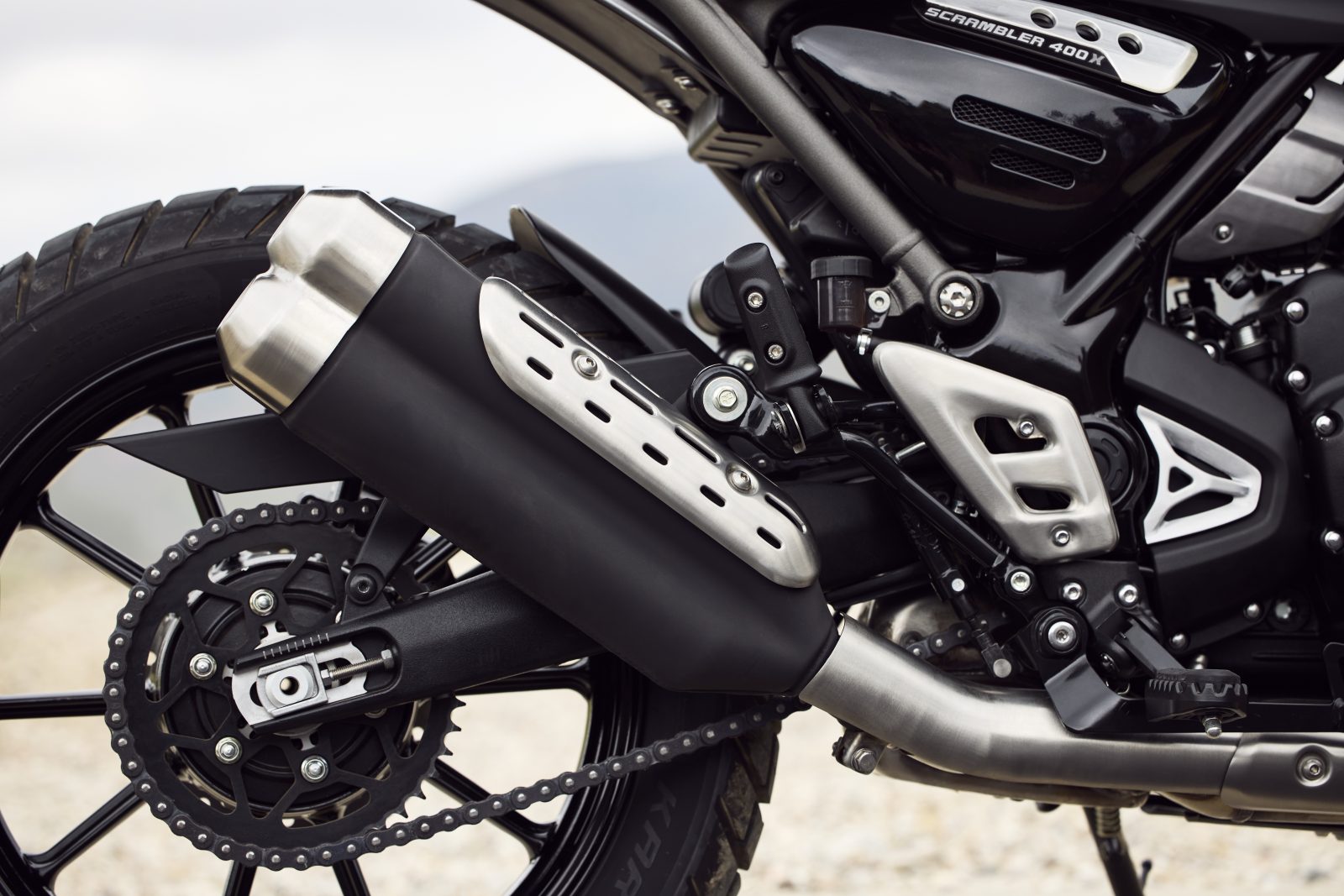
Triumph Australia’s tech guy Cliff Stovall says the engine’s internals look like you’d simply cut two cylinders off the brand’s famous inline-triple. Seat of the pants, it feels like it, too, such is its vibrationless torque up to about 5000rpm. This unlikely smoothness was instantly surprising, as was the urge, the lightness of the ‘torque-assist’ clutch and the responsiveness of the ride-by-wire throttle, which helps facilitate the switchable traction control. Get it up to freeway speeds and the buzz is much more noticeable, but it’s not overly offensive.
All this rideability means the design brief of urban commuter has been nailed and a dip into the accessories bin for a topbox ($437.12 which includes mounting kit and luggage rack, but not fitting) means you’d be happily zipping through the traffic on your way to work with ample space for a laptop, gym gear and a cut lunch.
Adding to the Speed 400’s commuter chops is the narrow ’bar and light handling thanks to a lively steering geometry and a 17-inch front wheel. The Scrambler gets a 19-inch front wheel (and a few extra accessories) as its major point of difference, and is fitted with Metzeler Karoo ‘all-road’ tyres while the Speed gets Pirelli Rossos. Where are the savings here again?
It’s also worth mentioning that I’m 193cm tall and I weigh 100kg so you’d think the Scrambler, with a 835mm seat height (the Speed is 790mm), would be the natural choice. It does feel more like I’m sitting ‘in’ the Scrambler’s cockpit, but the Speed 400 wasn’t too small. The footpegs are set back so they don’t drive my knees up into the handlebars, and there’s plenty of room on the seat to move around.

Still, the Scrambler does feel more Stretch size and I like the headlamp cage, handguards (no, they don’t have aluminium reinforcement) and twin mufflers which, along with the bigger front wheel, add an extra grand to the price.
The larger front wheel on the Scrambler, longer wheelbase and 20mm extra suspension travel means it’s less willing to turn into corners and change direction. Not hugely – we’re not talking top-heavy first-generation Speed Triple here – it just takes a little more of an ask of the inside of the ’bar when you want to turn in. Some riders on our launch found that to be preferable as it inspired a little more confidence, but I loved the Speed 400’s willingness to change direction and hold its line.
This was tested on some of the twisty backroads north of Melbourne where I reckon I had the most fun on a motorcycle under $9000 that I can remember (early-onset dementia notwithstanding).
Firstly, that peach of an engine (which can rev all the way to 11,500rpm!) has a perceptible surge of power from just before peak torque (37.5Nm) kicks in at around 6500rpm to when the kilowatts top out at 8000rpm. This ‘powerband’ fairly launches the bike out of corners and gives you around 2000-3000rpm of performance which encourages further exploration.

Throw the Speed at a corner and it becomes a dance with the front and rear brakes. Grab a fist full of brake lever and the front-end dives on that non-adjustable 43mm fork, but a little dab of that floating-caliper 230mm rear brake levels things out and the bike rails around corners beautifully.
It inspires loads of confidence and the generous cornering clearance makes for a competent Sunday scratcher. What it also means is that there is enough in this bike to keep newer riders interested as their ability improves so they may be kept long after the P-plate comes off the back. Not that we tested this, but I reckon the Scrambler would be just as much fun on dirt roads with those Karoos and torque punch. So, if you were aspiring to the adventure bike market, this is a very good entry point.
Which is why these bikes exist. Before these new 400s, Triumph didn’t really have a learner friendly introduction into its brand, aside from its Trident 660 and LAMS approved Daytona 660, which new riders perhaps found a little intimidating.
It was a glaring gap in a market which has become insanely popular, so it made sense for Triumph to go hard at its first foray into the sector with a platform that looks set to be at the pointy end in sales.
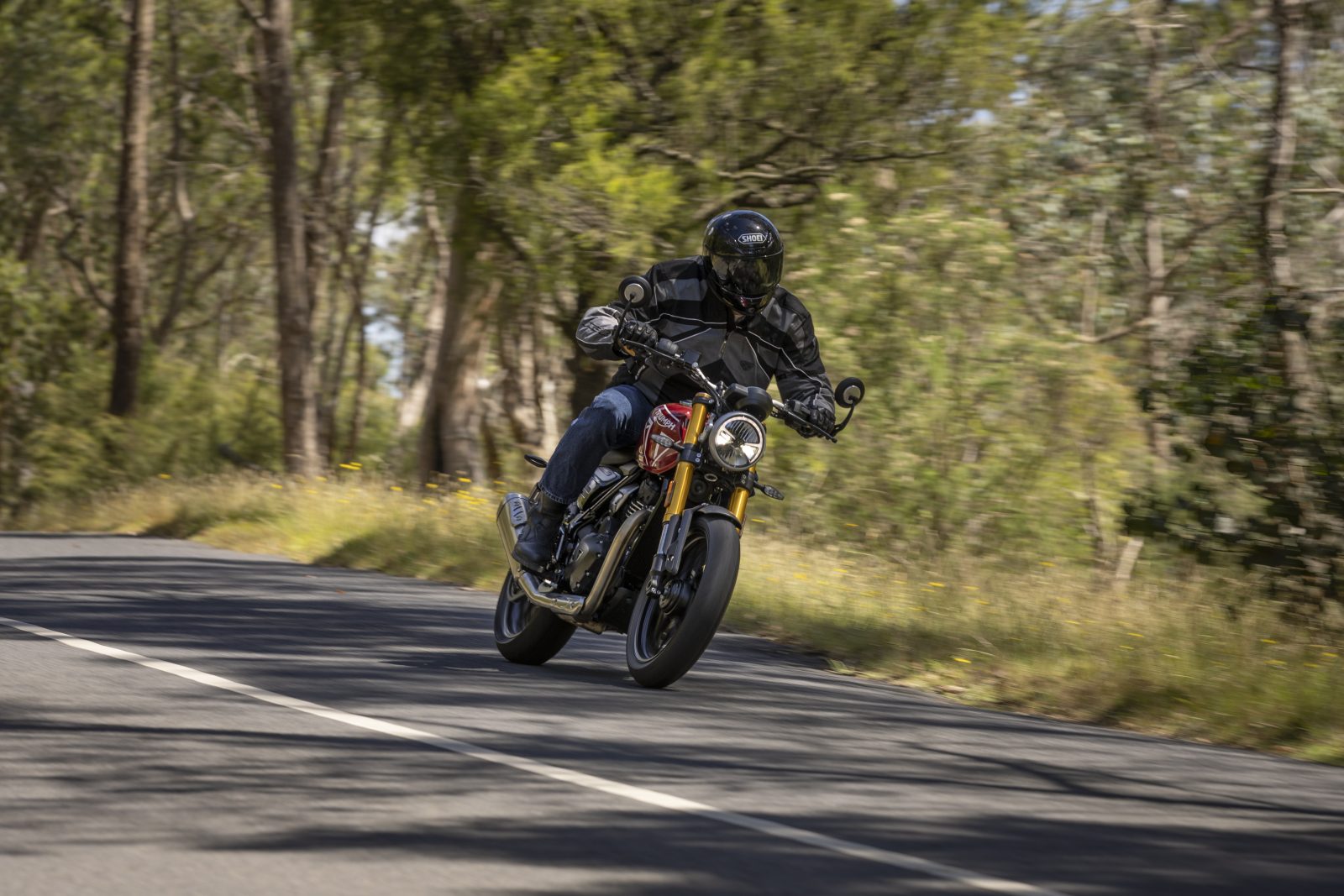
What it has achieved is a quality entry point, not only into its range of motorcycles but motorcycling itself, with a pair of bikes that look set to find a solid following in Australia.
PROS: Great value for money. Smooth ’round towner. Good spread of power.
CONS: Lack of fork adjustability. Engine vibration at freeway speed. More colours please!
TEST: JUSTIN ‘STRETCH’ LAW PHOTOGRAPHY DEAN WALTERS
Volumetrics
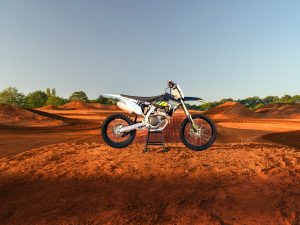
Bajaj Auto sold 3.6 million motorcycles in 2023 and is one of many Indian manufacturing conglomerates that have partnerships with savvy, well-known car and motorcycle brands. These major brands are cashing in on low manufacturing costs and the ravenous Indian market to make volume rather than margin the profit generator.
Triumph’s partnership with Bajaj Auto was announced in 2020 and the phrase “aspiration and affordable” was used to describe upcoming models, giving clues to the arrival of these new 400s. It was clever thinking for Triumph to launch its first real learner model into a market where bikes sell like iPhones.
Judging by the boyish glee of Triumph Australia staff during the Melbourne launch, they are on a winner with international sales exceeding expectation since they were first launched in July last year.
Meanwhile, Triumph is making moves in other sectors. The TF 250-X motocross bike (pictured, right) is expected to shove the Hinkley brand firmly into the competitive off-road space and the purchase of Oset electric off-road bikes means they’ll get even dirtier.
SPECIFICATIONS
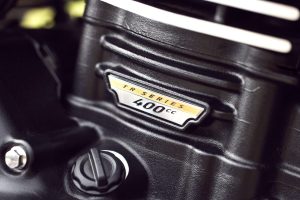
ENGINE
Capacity 398cc
Type Single cylinder, DOHC, four valves
Bore & stroke 89mm x 64mm
Compression ratio 9.5:1
Cooling Liquid
Fueling EFI
Transmission Six-speed
Clutch Wet, multi-plate, slip-assist
Final drive Chain
PERFORMANCE
Power 29.4kW (39.4hp) @ 7250rpm (claimed)
Torque 37.5Nm @ 6850rpm (claimed)
Top speed 180km/h (est)
Fuel consumption 2.9L/100km (claimed)
ELECTRONICS
Type Bosch
Rider aids ABS & traction control
Rider modes Not applicable
CHASSIS
Frame material Steel
Frame type Backbone
Rake: 24.6°. Scrambler: 23.2º
Trail 102mm. Scrambler: 108mm
Wheelbase 1377mm.
Scrambler: 1418mm
SUSPENSION
Type Not given
Front: 43mm, non-adjustable USD fork, 140mm travel. Scrambler: 150mm travel
Rear: Monoshock, preload adjustable, 150mm travel
WHEELS & BRAKES
Wheels Cast aluminium
Front: 17 x 3.0 Rear: 17 x 4.0
Scrambler Front: 19 x 2.5 Rear: 17.3.5
Tyres Pirelli Rosso
Scrambler: Metzeler Karoo Street
Front: 110/70-17
Rear: 150/60-17
Scrambler Front: 100/90-19
Rear: 140/80-17
Brakes ByBre, ABS
Front: Single 320mm disc.
Scrambler: 320mm disc, four-piston caliper
Rear: Single 230mm disc, single-piston caliper
DIMENSIONS
Weight 170kg. Scrambler 179kg (wet, claimed)
Seat height 790mm. Scrambler: 825mm
Width 795mm. Scrambler: 825mm
Height 1075mm. Scrambler 1190mm
Length Not given
Ground clearance Not given
Fuel capacity 13L
SERVICING & WARRANTY
Servicing First: 1000km
Minor: 16,000km or 12 months
Major: 30,000km
Warranty Two years, unlimited kilometres
BUSINESS END
Price $8990 Scrambler: $9990 (ride away)
Colour options Phantom Black, Carnival Red, Caspian Blue. Scrambler: Phantom Black and Silver Ice, Matt Khaki Green and Fusion White, Carnival Red and Phantom Black
Contact triumphmotorcycles.com.au


